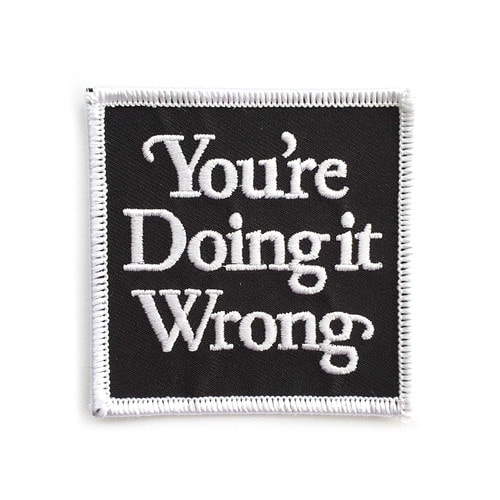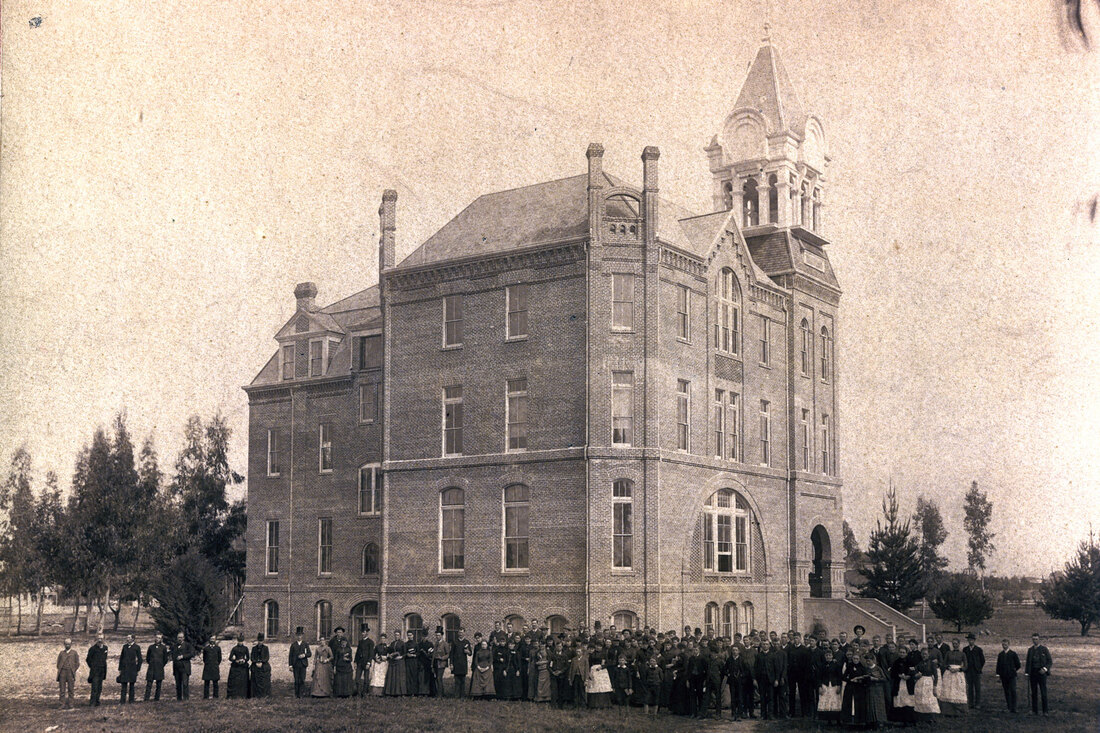|
Author: Trisha Aure
It seems nowadays there are no safe places for thoughts, comments or posts. There will always be someone that will have a negative response no matter what the content is. I was reading a post on LinkedIn about a company that hired their first woman board member. This is something that should definitely be talked about and celebrated. But then I started reading the comments, and it was talking about everything this woman was not: “That’s great, but it would be better if she wasn’t Caucasian.” “How is she going to stand up to her male counterparts?” Why can’t we see the actual message here instead of seeing everything that it is not? What would life be if we celebrated what we should instead of tearing down things that don’t align with our personal goals? We all have different goals, different paths and different stories. And this is exactly as it should be. We should be uplifting and supportive of one another, even when we disagree. Having a healthy mindset is not the easiest, and I have come to find out, this is an everyday activity. I’m sure there are many speculations on why our minds are triggered to see the bad rather than the good. The news, social media, celebrities, and pure gossip are just to name a few. I started thinking about this during a conversation I had with a friend of mine about my road rage. I realized that I get frustrated when someone would cut me off or drive too slow because I would take it personally. As though the driver saw me and said to himself “I’m going to cut that girl off…. haha.” My friend put a bit of perspective out there for me and brought up that this person could be driving their hurt kid to the hospital or frantic because they received some heart wrenching news. This struck home because it made me sound egotistical as though the world revolves around me; why did I think that? What does this negativity do to us? It creates stress and an unhealthy lifestyle. “Emotional stress can weaken the immune system and cause high blood pressure, fatigue, depression, anxiety and even heart disease.” In fact, it is estimated +75% of the physician office visits which occur in the USA annually are for stress related ailments. It’s also the leading cause of death. It’s a wonder why we react the way we do to certain actions is the first step. We need to change our daily habits in order to begin a healthy lifestyle. This can include:
Key Take Away Slow down and live life. Stop holding yourself back from happiness, success, family or anything else that you are striving to. Stop worrying about things that are out of your control. If it is out of your control, you can’t do anything about it, so why worry about it? Why get upset about it? Why lose sleep over it? By taking stress out of your life, things won’t look as dull. Our minds are so powerful, that if we train it to see things for what they really are it would be full of more rainbows than icy storms. Action Item You don’t know everyone’s story and why people act the way they do. We only have control over our own actions. Instead of judging someone, talk to them, lend them a hand, or let them pass. Humor is a big stress reliever for me. You can’t stress when you are laughing. If something works for you, share it. Sharing is caring people.
0 Comments
As a child I dreamt of being a business owner. While the other kids in the neighborhood were talking about being pro athletes I always imaged myself starting a business. At the spry age of 10 I opened my first business in the early 90's in my parents basement in rural New York selling used skateboard parts. It was exciting! I had a business sign which proclaimed ‘Sk8 Parts’, a rack to display my shoddy products for sale and even a chair to sit on while waiting for the sales to come rolling in. After a summer being in business I had only made one sale a set of dirty and worn out skateboard wheels for a measly fifty cents to a kid down the street. That sale bought me a pink panther ice cream from the neighborhood ice man. While the business didn’t rocket me to instant success like I had envisioned I was hooked on the idea of being a business owner in the future so I could buy the whole ice cream factory, not just one pink panther. As I got older I tried my hand at inventing all sorts of things, products that I thought would get me rich, if I could only figure out a way to sell a few million of them. First it was a gaming chair, then workout towels and even a handheld flashlight projector. My entrepreneurial dreams ended at the time with a website I tried to start in 2006 that would allow people to ask questions and get advice based off real life business situations they were dealing with. That was a $2k boondoggle which went nowhere.
It wasn’t until the summer of 2015 that I would find my way, diving head first into entrepreneurship by starting Square-1 Engineering. Thankfully I had a lot of help from many close people around me (wife, parents, friends) who all were incredibly supportive. Four years into my current entrepreneurial journey I’ve learned and experienced firsthand many things which have helped me navigate my way to present day. Of all these experiences, learning lessons and awareness gained there are eight which have brought about the biggest positive impact in helping me weather the entrepreneur start up storm: 1.Get A Mentor This is the single second best decision you’ll ever make in business. The first best decision is to become an entrepreneur. Mentors have experience which you can learn from helping you avoid mistakes along the way. 2.Support Gets You Over The Hump Make sure those close to you understand your vision and support it. They don’t have to buy in 100% but if it’s you against the world there are going to be some very long nights in store. If you are married it’s vital your spouse understands the opportunity and supports it, even in the down times. 3.Some Things CAN Wait Some people will tell you it’s important to write a business plan, vision, mission, blah blah blah, right away. Unless you’re in a situation where you need to ask for capital to start the business the best thing to do is put those things aside and focus all your efforts on how to make money. Ultimately being an entrepreneur means you’re selling something to someone so the more time you spend on how you’re going to get paid for the product or service you’re providing the better off you’ll be. 4.You Can’t Be Everything to Everyone I failed miserably here. When I did start to get customers I tried to offer them everything under the sun in order to get their business. Some times it worked, often times it created a nightmare for me as now I had to deliver the goods. Never over promise, you’ll most likely end up under delivering. Find one or two areas you can become an expert in, one or two problems you can solve for your customers. Do that and only that before you start getting into other areas of opportunity. 5.Having a Plan-B is Dangerous I’ve read countless articles about “the power of having a ‘plan-B’ ” or an alternative course of direction. I hate that advice. As an entrepreneur if you don’t believe in what you’re doing and have a plan-B set up in case you fail you’re almost destined to set yourself up for disappointment. I’m not saying it’s not important to plan ahead for bumps in the road but if you’re going to start a business that should be your one and only focus. Anything other than a mentality of success has no place for you. Visualize to materialize. 6.Outsource Work The first several months I attempted to handle all the accounting and finance portions of the business only to realize two things: 1 – I’m not good at it nor do I like it; 2 – I created more problems than I remedied. Best advice I got was to pay the money to get a reliable CPA that understood my business and could help scale it up by making good decisions. Best money I’ve ever spent was a CPA. 7.The Power Of Saying ‘No’ Crucial to your success as an entrepreneur is the ability to politely and professionally say ‘no’. Similar to ‘you can’t be everything to everyone’ saying ‘no’ is harder than it sounds. Naturally you want to say yes to everyone, making everyone around you happy, especially if it’s a customer. Unfortunately, when we do this we get pulled in a hundred directions which causes us to deviate from our destined course. If you are asked to do something and it doesn’t align with your top 2 or 3 priorities politely decline and thank the person for the opportunity to be considered, even if it is a customer. 8.Breathe, It’ll Be Okay Very few things in life actually have the ability to stop you from moving forward in your new business. When bumps in the road momentarily derail you (you will experience plenty of bumps along the way) take a deep breath and be thankful for the opportunity to learn and grow as a professional. Stephen Covey put it best when he gave us the 90/10 principle: “10% of life is made up of what happens to you, 90% of life is decided by how you react.” – Stephen Covey Monday Quickie - Your Desire for 'Work life Balance' is Hurting Both Your Career & Personal Life10/14/2019 Article was written by guest writer Trisha Aure
Many of us live two lives. These two lives run on parallel tracks to one another yet few of us understand the dichotomy which exists by having a work life and a home life which operate separate from one another. We’ve been told growing up these lives need to be mutual exclusive of one another where we don’t bring our personal life and issues to work and vice versa. This inevitably creates a variety of issues for us at both the home and office. The biggest issue it creates is our ability to grow as people which leads to our ability to grow as professionals. Have you ever heard that personal growth is necessary for professional growth? It is, I just didn’t realize how critical this was till about 6 years ago. Some people believe separation needs to exist between work and home, or ‘work life balance’ as we commonly like to phrase it. I’m not convinced ‘work life balance’ is possible, especially not if you are looking to create a long term successful career which your personal life benefits from. This ladies and gentlemen is where my career ah-ha moment began – the idea of a ‘work life balance’ is garbage. We look at this phrase typically from the work side of things meaning we should work less in order to enjoy our personal lives more. Yet how often are we looking at this phrase from the personal side to understand how we impact our professional experience based on who we are outside of work. It goes both ways and to think a steady ‘balance’ between the two is possible is a dream in fantasy land. I was in a new company and aggressively working on advancing my career. I had a lot of personal baggage I thought I was leaving at the door before I walked into the office. I had some deep heartache within my family dynamic that I never figured out how to live with, so I decided to act as though my life was perfect and I ignored my past. This act forced me to live two different lives and I will tell you, this was not only one of the hardest parts of my life but it was definitely the loneliest. This is where I learned I wear my heart, and therefore emotions, on my sleeve. This isn’t necessarily a bad thing, because that is where my passion comes from, the heart. What I learned is when you are essentially living two different lives, it starts to take a toll on both your career and personal life. I had received some hard feedback and it was based on my attitude because I was aggressively trying to hold my personal struggles back. If anyone has ever been here before you know that holding feelings back only creates a blow up later down the road and mine happened at work. Luckily, I had great people around me that cared about me professionally AND personally. I obtained a mentor and started receiving coaching on how to deal with my struggles that I quite frankly kept pushing down for over a decade. It was not an easy nor short process. Then again, anything worth having or doing right isn’t easy in the first place. I started working on building a healthy mind, body and soul, and 6 years later I’ve continued this quest not stopping once. Growth is an everyday event and I have built some great routines that have helped me merge my two lives between home and work. After 6 years of focus, dedication and some really hard work to improve myself I have lost 40 pounds (and kept it off), I’m in a leadership role with a company I’m part-owner in, I’m actively involved in the community and constantly improving my life on both sides. I honestly do not believe I would be where I’m at today if I continued to try and live two different lives. To tie this all together, I believe that growth within your career begins at home. Have you ever heard, you can’t love someone until you love yourself? I believe that this internal love for yourself will only push you to cross any and all boundaries that you put up yourself. Stop putting up boundaries, and add some goals to your life. Once you start pushing forward, it’s crazy how that turns into unstoppable. Key Take Away You must take care of yourself in order for you to strive in other parts of your life. In regards to work and life, this is an AND, not an OR. We need to be confident in both in order to grow in both. I’m continuously reading leadership books and I can relate what I read in both my professional and personal life. We need to do away with catchy slogans like ‘work life balance’ because all they do is drive us to live a lifestyle which isn’t attainable. Action Item If you are stagnant in your career, or struggling with something personally and you see it hindering other aspects in your life, find someone to talk to, find a mentor, find a coach to help you figure out how to get over that hump. I currently have a mentor which I found on micromentor.org. This is a free site and it matches you with people that are looking to grow their career in various areas. Growth is definitely uncomfortable and no one likes change, but building a strong support system will help guide us in achieving our goals and creating a well balanced successful life. What’s the difference between a great leader and an average one?
I’ve had the opportunity to observe dozens of leaders in my career. Some were exceptional, most barely passed for average. I’ve spent many hours tossing and turning on the idea of what makes for an exceptional leader, what makes them great. I’ve read books, had discussions with colleagues, watched videos and talked with people who are far smarter and experienced than myself. After all of this wonderful introspection and discovery one characteristic continues to pop up which defines great leadership over average leadership. It’s a mindset, a willingness to do what others often won’t. What makes great leaders is their ability and willingness to use ‘managerial courage’. Managerial courage is the linchpin, the cornerstone, the apex for all things related to leading successfully. The word courage is of itself is an incredibly powerful word. The late John McCain had described courage as “that rare moment of unity between conscience, fear, and action, when something deep within us strikes the flint of love, of honor, of duty, to make the spark that fires our resolve.” Bill George, former CEO of Medtronic and best selling author is quoted as saying “Courage is the quality that distinguishes great leaders from excellent managers.” George also said, “courageous leaders take risks that go against the grain of their organizations. They make decisions with the potential for revolutionary change in their markets. Their boldness inspires their teams, energizes customers, and positions their companies as leaders in societal change.” If we apply George’s and McCain’s definitions of courage we can surmise that ‘managerial courage’ is the willingness to make decisions which we believe to be in the best interest or our employees or company, regardless of the popularity or risks involved. A deeper look into managerial courage and we find that it can be further described as a set of actions and beliefs a leader possesses which define who they are and how they go about leading and inspiring others. These actions and beliefs include:
There’s no other word I can think of other than ‘courage’ to appropriately define good leadership. Primarily because it is so easy to not do the things listed above, especially when times are tough, yet to do them consistently it takes great discipline and resolve. It also means we will inevitably make decisions which don’t favor ourselves yet position our employees or company for better opportunities. Here’s what managerial courage looks like in real life. Scenario: A CEO of ABC company is pressing his VP of Sales to reach revenue targets by year end in order for the company to hit its financial goals. The VP of Sales has one sales rep in particular who singlehandedly drives 30% of the company’s revenue, consistently coming in as the #1 producer in the company, year after year. The company relies on this sales rep heavily to produce and as such the company has benefited handsomely. Unfortunately this same sales rep also causes a lot of problems within the company. He’s had several complaints against him by other employees, has a bad attitude, disregards company policy, has even been caught using his company expense account for personal purchases. If that wasn’t enough our lovely sales rep has also caused two other employees within the company to quit. Even though this sales rep is a cancer to his company, the company overlooks his problems because he’s a top performer. They’ve swept the issues under the rug hoping things will miraculously improve by themselves. Let’s face it, he makes the company a lot of money, how can they walk away from that. Does this scenario sound similar to you? Managerial courage in the above scenario would look like this. The VP of Sales provides a variety of opportunities for the sales rep to improve while demonstrating the employee is acting in accordance with company standards and the VP’s expectations. In the event these opportunities to improve and or employment warnings are not adhered to the VP of Sales must make a tough and unpopular decision to fire the sales rep. It’s a tough decision indeed because the VP of Sales knows she very well may lose her own job because she just went against the CEO and fired an employee that represents 30% of the company’s annual revenue intake. In this scenario, our VP of Sales chose an unpopular decision because it’s what was truly best for the company and its employees, despite what her boss the CEO had advised. The VP of Sales fired an employee who is a cancer to those around him. Ultimately it doesn’t matter how good the sales rep is at their job, if they are causing issues and aren’t able to adjust accordingly after receiving feedback they don’t belong there in the first place. This is managerial courage. The willingness to make a decision to do what’s right even when the outcome may be unpopular or damaging. It takes great tenacity, strength, fortitude, mental determination and care to be a leader and do so successfully. Sure, anyone can be a leader, but those who do it successfully stand head and shoulders above their counterparts when they utilize managerial courage. The characteristic of courage is the very essence of what leadership is all about. Key Take Away: Standing up for what’s right and having the willingness to make tough decisions is key to being a great leader, even if the outcome may be viewed as unpopular. Action Item: Read the book ‘True North’ by Bill George. It’s an incredibly well written book that teaches people who to be themselves while acting and making decisions which are in accordance with your beliefs. Are you an effective leader? If you answered ‘Yes’, how did you come to that conclusion? Did you base your answer off your company financial performance, goal achievement track record or your wonderful employee morale? What if Peter Drucker himself had an opportunity to review your leadership work, do you think he would come to the same conclusion? If by chance you are new to the philosophies and teachings of Peter Drucker I highly suggest taking some time to familiarize yourself with his works. Short and sweet – Drucker is considered the godfather of business leadership and is responsible for much of what we know today on how effective leaders work and operate. His works redefined leadership through the 60s, 70s and 80s and we still refer to his teaching on the daily today. What makes for an effective leader? Let’s ask Drucker himself. ‘The Effective Executive’, a leadership book for the times and originally published in 1967, provides eye opening insight on exceptional leadership in ways which broke the mold back then and continue to do so today. ‘The Effective Executive’ provides a straight forward, simplistic guide to “getting the right things done” for people in a leadership capacity. What I found amazing about this book is how relevant and simplistic Drucker’s advice is, even for today’s purposes 52 years later in a business world that is far different from when these thoughts were put to paper. So, what is it then that makes for an effective leader? All too often I find people enjoy making the topic of leadership how-to’s overly complicated. Maybe they do that to sell more books or to justify their new and insightful leadership methodology. For me, I’ve found the more simplistic something is the better chance I have in understanding it, implementing it and continuing to act on it as a new habit. Drucker’s approach to leadership success and effectiveness is simplicity at its best. He identifies the following five core competencies successful leaders should have as a part of the fabric that guides them through their daily work:
Humbly, I’d like to offer up a 6th leadership core competency to add to Drucker’s list:
While this list may seem incredibly simple, I can tell you from personal experience it’s anything but that. Often times the most simplistic things in life can be the most difficult to master. Why? Because it takes discipline. Though these concepts may be easy to understand, the difficultly comes in the form of holding oneself accountable to doing it above all other things. That’s the tough part! “Intelligence, imagination and knowledge are essential resources [for a leader], but only effectiveness converts them into results.” – Peter Drucker Being disciplined to doing the right thing at the right time is certainly easier said than done. So much so that Drucker identifies that the number one reason for leadership failure is the inability or willingness to change with the demands of and expectations of the new job. Key Take Away: The leaders’ who are willing to change and adapt while being disciplined to doing the right things at the right time are the ones that will be the most effective. Action Item: Read Drucker’s book ‘The Effective Executive’. Regardless of your job title the insight you’ll gain from his timeless approaches to leadership is worth every minute you spend reading it. The demand for consulting is up, way up!
The US consulting marketplace has grown consistently over the past decade. In the last three years, 2015-2018, consulting services have increased upwards of 25% bringing it to an estimated $68.5 billion U.S. dollars. Demand is up and so is the desire from the US workforce to provide the service. Whether you’re new to consulting hoping to dive in to get a piece of the current demand for consulting services, or you’ve been consulting for years, you’ve inevitably been challenged with the thought… “How should I charge for my services?” Here we’ll give into a quick and straightforward guide for establishing your consulting fees and the things which need to be taken into consideration before settling on your pricing approach. #1: Research the local marketplace – it is imperative you understand what the marketplace yields for the consulting services you plan to offer this way you have an understanding of how you fit in with your competitors and their respective offerings. Best way to obtain this information is to ask others in the business, attend events and get quotes from others in similar lines of work. While you always want to make sure you’re getting paid for what you’re worth, you also need to be cognizant of pricing yourself out of the game. For example, in Irvine, CA there is a large supply of people offering mechanical engineering design services. Baring any unique or niche expertise the average mechanical engineer consultant charges anywhere from $50-80/hr. If you’re charging $125/hr for similar services you may find yourself missing out on projects with potential clients because the end user, or client, has too many other reliable and capable consultant options to choose from at rates cheaper than your offering. #2: Fixed cost vs. time & materials – you’ll need to decide up front what type of pricing strategy you’re going to use. Fixed cost is when you charge a flat fee or a ‘not to exceed’ fee for work you’re performing regardless of the amount of hours it takes you to get the job done. Time & materials pricing structures price based on the amount of hours it takes to complete the job. Read more HERE. #3: Long game mindset – your pricing should reflect both your experience, capabilities but also your willingness to get repeat business from your clients. If your rate is higher than the average marketplace rate for similar service you may still be able to get work, however you may find the client doesn’t pick you for additional work or longer projects. Remember, the higher your rate the higher the clients expectations will be on your performance and the further scrutiny you will receive on your work output. #4: Know your profit margin – it’s important you understand what potential profit you stand to make for each project. Profit is what keeps you growing and stable long term. If you’re constantly breaking even you leave yourself at risk for unexpected downturns and other things out of your control. Establish an ideal profit margin per project you want to achieve and incorporate that into your pricing. Learn how to establish a profit margin HERE. #5: Flexibility is key – clients like working with consultants that are flexible; if you’re too rigid with your pricing you may find you’ll lose out on opportunities in the long run. Try pricing your work based on the difficulty of completing the task. Perhaps you have a minimum threshold you’re going to charge per hour (say $100/hr) and then based on the work you’re potentially taking on you will scale your price upwards by 25%. It’s not uncommon for consultants to have a pricing menu based on the range of their capabilities and difficulty to perform the work at hand. We suggest not using a ‘one size fits all approach’ for pricing your services. #6: Know what you need – while you should never price your consulting practice based on your personal lifestyle (clients don’t care how big your house is, what car you drive or what your bills are so they certainly aren’t going to pay you more just because your lifestyle requires it) it is important to know what you need to be charging in order to meet your personal financial obligations. Once you know this number go back to step #1 in this article to see if your pricing number is in line with the general market. Don’t charge more just because you need more to live. Clients can smell that from a mile away and it’s a big turn off. Key Takeaway: Pricing should be based solely on the value you provide. Your consulting price should have flexibility built into it while keeping in mind the difficulty of the work being performed. Ensure you know how the marketplace is operating and what others are charging for similar services so you can be competitive with your offering. Action Item: Meet 3-5 people in the consulting space which is similar in nature to yours. Learn about their offerings, how they go about pricing their service and what challenges they’ve had with clients specific to pricing. The more you can learn from them ahead of your own efforts the better off you’ll be when it comes time to present your price in front of a potential customer. It’s common to think “I don’t have the job title which warrants me to be a leader”. Early in my career I struggled with this exact mindset challenge. I thought “if I don’t have a title which gives me the power to lead, how and why would anyone listen to me in the first place”. This mindset is especially true and often found with people who are in individual contributor roles. We use the excuse “I don’t have the title to lead” as our justification for not stepping up to taking action, even in times when we know it’s what is needed. I was well into the third year of my career when a senior partner in our office pulled me aside and gave me some much needed advice. Let’s put it this way, it was a thump on the head in a caring way. What he said was simple, yet incredibly eye opening: “Your job title doesn’t give you permission to lead or make you a good leader people will respect, it’s more about your ability to help others achieve their goals while having their backs. We can lead from any role in the company, there’s no need to wait to be told you can lead or given a title which means people have to listen to you. So, why are you waiting?” Urghhh, he had a point, even though in the moment my ego still wasn’t allowing me to hear it. After a couple days of digesting this feedback I had to admit I felt pretty dumb about the way I was thinking about leadership and my role within the company. I had to get over my ego and the thought that I needed a title to justify my ability to lead when the reality was, and still is, good leaders are those who take action and help others. They listen, guide and influence because they’re passionate about helping others, first. This in turns builds trust, respect and comradery – these are the building blocks and keys to being a good leader. Titles aside, those who can build trust with their colleagues gain respect which leads to healthier interactions. These things are possible and certainly most achievable even if your job title doesn’t reflect management. Whether you have the leadership job title or not what’s important are your actions and the intent behind why you do them. Follow these steps to help guide you down the path of leading successfully: 1.Let Go of Fear – the basis for our lack of leadership is fear; fear we won’t do it right, fear people will reject us, fear we’ll look stupid in the process, etc.; once we acknowledge fear is what holds us back from doing what we know is right or what we want we then can go about changing our perspective to improve the situation 2.Build the Foundation - for what successful leadership is by reading “The Go-Giver” by Bob Burg and John David Mann 3.Reflect - on who you are as a person, professional, peer and employee of your company a.What skill sets or areas of influence do you possess which you could use to positive impact, support or mentor others within the organization 4.Channel Your Vulnerability – good leaders understand this truth, to be trusted as a leader we must be vulnerable. This doesn’t mean crying because the creamer when bad and ruined your coffee, it means being honest and open with your intent, your struggles and perspectives to help people see who you really are. No leader is perfect. 5.Be a Coach – listen and guide as this is the pathway to good leadership; like the old proverb says “give a man a fish and they will eat for a day, teach a man to fish and you feed him for a lifetime” 6.Act - start small and pick one person or department you believe you can positively impact; talk with that person or department to share with them your ideas and why you believe this would be of value to them, get their buy in before moving forward 7.Inform Management - Share with your manager the idea you have to help support and mentor others within the company, .Be prepared to provide specifics on how this could positively impact the company 8.Consistency - implement a schedule you and your new mentee can follow which keeps you on track helping them achieve their goals, key thing here is to keep it natural don’t overdue it with processes and procedures Check out our Monday Quickie recap as Trisha Aure and Travis N. Smith discuss this weeks article, 'You're Doing It Wrong'; we cover ways to address miscommunication and how to ensure successful project/ work completion between employees, consultants and suppliers. To view the article: https://lnkd.in/gyFJmcE Monday Quickie - You're Doing It Wrong7/22/2019 “They gave us world class, but all we needed was the basics.”
Last week I was speaking with a VP of Quality at a small medical device company at which point he politely complained to me about a recent experience he had with a consultant their company brought onboard. The company was implementing a new online quality management system (QMS) and was utilizing this consultant to get it up and running. The VP shared with me his irritation about how the consultant came in and took on the project as an expert in the field. The consultant had done many QMS implementations prior and came with good recommendations of his work. As the conversation went on the VP share further irritation about his experience working with the consultant. He brought in an expert to do a job that was rather straight forward yet that’s not what the company got in the end. Unfortunately, the consultant failed to understand one of the most important aspects of his job – understand the needs of the customer and implement accordingly. “We’re a small company, we don’t need all the bells and whistles right now [from a QMS system]. We just need a system that keeps us in compliance while making things easier from a process flow standpoint.” The VP was sharing with me a painful experience he was having as a result of someone doing work for him and not understanding what was actually needed in the moment to be successful on that project. Sometimes what’s needed is the basics, not world class. The key is knowing when each of these is appropriate. All to often we show up to a project or work with the idea we’re going to dress up the proverbial pig ready for a fancy night out on the town. This pig of ours is going to look amazing, amazing because of the work we did to get it there. However, we end up missing the mark because we don’t bother to ask the right questions along the way. If we had bothered to ask the right questions to understand what was truly needed by the company and the key stakeholders we may find out the ‘pig’ just needs a new pair of shoes, not a whole wardrobe change. Here’s how this played out in the scenario above with my client and VP…
Here’s the rub on the situation. If the consultant had bothered to ask the vital question of their client upfront “What does ‘success’ looks like at the end of the project?” he would have found out the client needed a practical QMS which met the basic needs of their product and regulatory requirements yet did not need a lot of the fancy bells and whistles larger companies utilize with their QMS. Basically, this small medical device company needed a QMS that was straightforward, basic yet allowed them to upgrade their company to meet the regulatory requirements for their product. The client wanted a no frills, basic system yet what they got was a world class system they’ll probably never fully utilize. Key Takeaway: Don’t assume your work or project requires you to put forth world class service. Sometimes ‘good enough’ is all that’s needed. Knowing the different between ‘good enough’ and world class work outputs is a vital skill to develop and implement in your career. Action Item: Before you begin your next project at work think to yourself “what’s really needed here? The basics or something more?”. Then actually go ask the key stakeholder in charge. Doing this shows an ability to think big picture with an appreciation for what’s best for the company, not what’s best to make you look good as a result of the work you can do. Remember life before the internet? What about the smartphone? If you grew up pre 2000’s you know exactly what life was like before technology forever changed the way we interact with others, work, play and pastime. I remember the days of doing research papers in school and having to use the card catalog system in the library to search out information. It was agonizing and tedious, but hey, it’s all we knew or had for that matter. Technology has certainly enabled us to be much more efficient in many aspects of our lives. As we’ve grown in our use of technology so have the side effects that come from our technology dependency in the office and at home, especially with our smartphones.
The side effects I speak of, impatience and declining interpersonal skills, directly impact an incredibly important part of our being - our peace of mind. People have become increasingly more impatient than they’ve ever been. I know because I’m one of them. The golden rule in business back in the day was to return a phone call within 24 hours. Today, if we don’t get a response in 30 minutes we think the person on the other end is avoiding us or must not have received our call. We then resort to a whole list of communication outreach shenanigans, frantically trying to get a response by texting, Facebooking, IG-ing, LinkedIn Messenger, emailing from three different addresses and blasting off SnapChats. Sound familiar? The result of our increased impatience is a heightened level of stress. When we’re stressed the last thing on our minds is peacefulness which leads to bad decision making, mistakes and a decline in our health. Stress is the real McCoy here as over 75% of all doctor's office visits are for stress-related ailments. Our interpersonal skills are also experiencing side effects of smartphones and their associates technologies. At an alarming rate we’re focused on the technology in front of us rather than the people and experiences we’re surrounded by. Ever been to a restaurant and see a couple facing one another, not saying a word, both eating ferociously while they text and bounce from one social media app to the next? An entire meal goes by with little more said than ‘pass the guac’. Parents at playgrounds are absorbed into their phones while their kids play about unaware that mom and dad are more interested in the scrolling unyielding stream of meme’s and picture perfect vacation images of strangers rather than their own kids development and experiences. Our conversations and relationships suffer because we are fixated on what is happening in the world thousands of miles away rather than what’s right in front of us. Folks, it’s not a pretty picture. Smartphones, while useful in many ways, have had a dramatic change on the way we operate. While I know the above to be true, I’m also an addict. Like many of you reading this I too am addicted to the never ending stream of nonsense on my phone. Yesterday a good friend of mine encouraged me to do a little test, one that I’ve jumped into wholeheartedly. As I write this article I’m 24 hours into a social media hiatus. I’m going for a month off, then from there I’ll evaluate how my life is for better (my hunch is this will be the case) or for worse without social media. I’ve deleted all social media apps from my smartphone and am excited to experience an existence without those distractions. I encourage you to join me in a month of social media/ smartphone hiatus. Use these five techniques to unplug so you can start enjoying life in the moment:
About the AuthorTravis Smith is the founder and managing director of Square-1 Engineering, a medical device consulting firm, providing end to end engineering and compliance services. He successfully served the life sciences marketplace in SoCal for over 15 years and has been recognized as a ‘40 Under 40’ honoree by the Greater Irvine Chamber of Commerce as a top leader in Orange County, CA. Categories
All
Archives
April 2024
|
Visit Square-1's
|
|















 RSS Feed
RSS Feed


